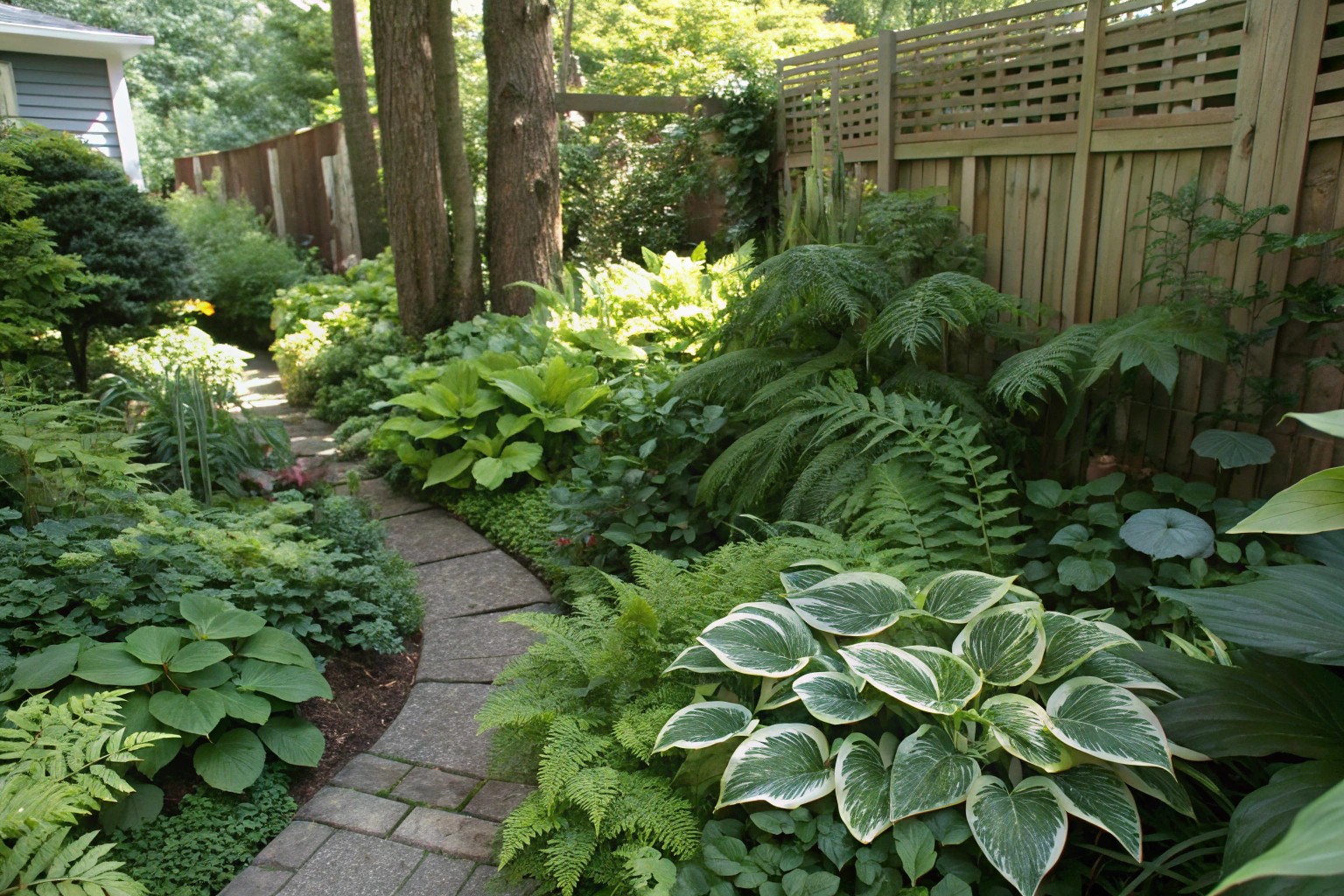Transforming shaded areas into vibrant, dynamic spaces requires understanding that shade gardening isn’t about settling for less—it’s about discovering a completely different palette of design possibilities. With the right approach, those challenging dark corners can become the most serene and visually striking areas of your landscape.
Understanding Your Shade Environment
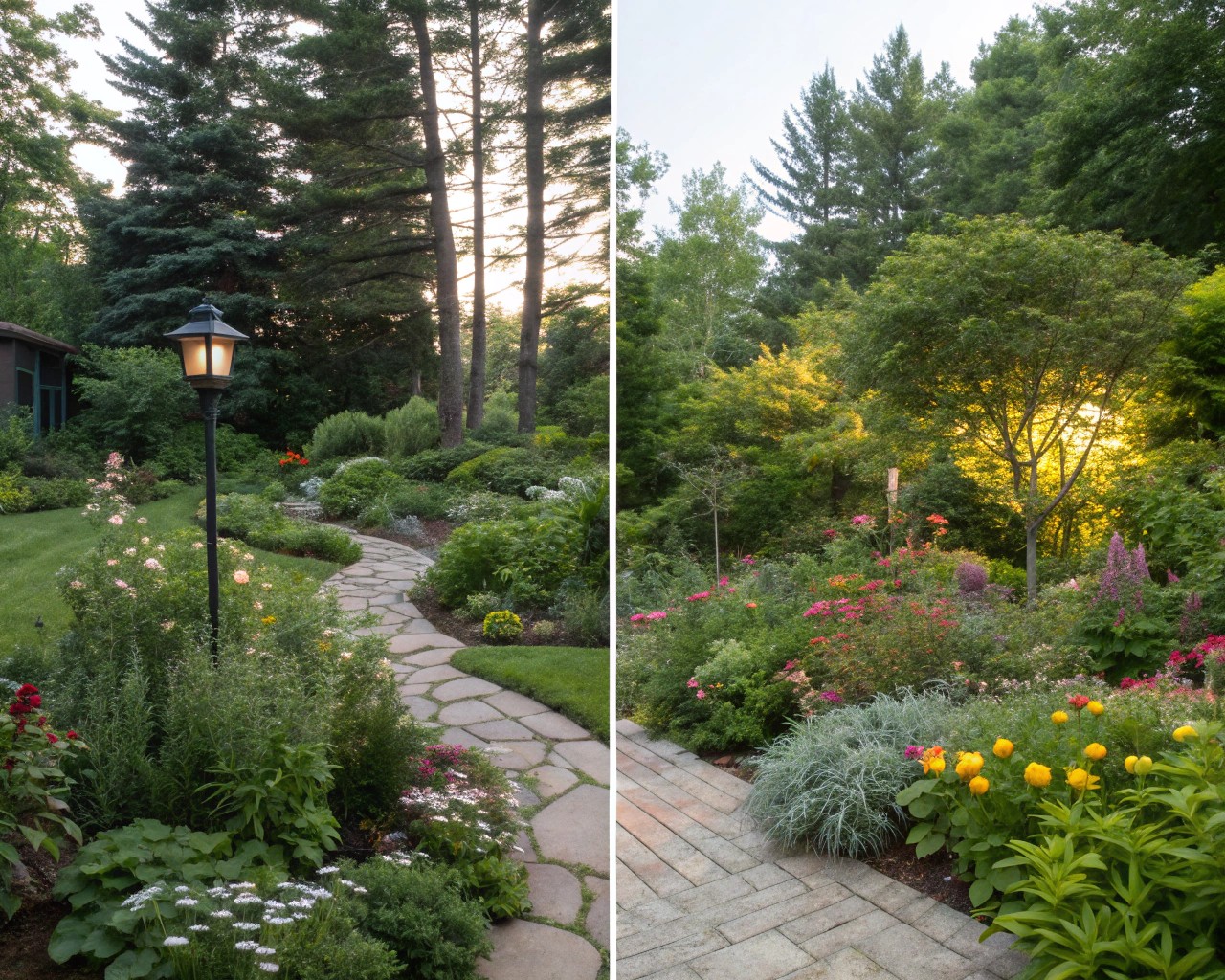
Before selecting plants or planning layouts, you need to accurately assess your shade conditions. Not all shade is created equal, and this fundamental understanding will determine your design success.
Types of Shade and Their Characteristics
Full Shade (Less than 4 hours of direct sunlight)
– Occurs under dense tree canopies or between buildings
– Requires true shade-loving plants with broader, thinner leaves
– Often maintains consistent moisture levels
Partial Shade (4-6 hours of direct sunlight)
– Found at woodland edges or areas with filtered light
– Allows for a broader plant palette including some sun-tolerant varieties
– Most versatile for design options
Seasonal Shade
– Areas shaded by deciduous trees
– Receives more light in early spring before leaf-out
– Perfect for spring ephemeral plants
Creating Your Site Assessment
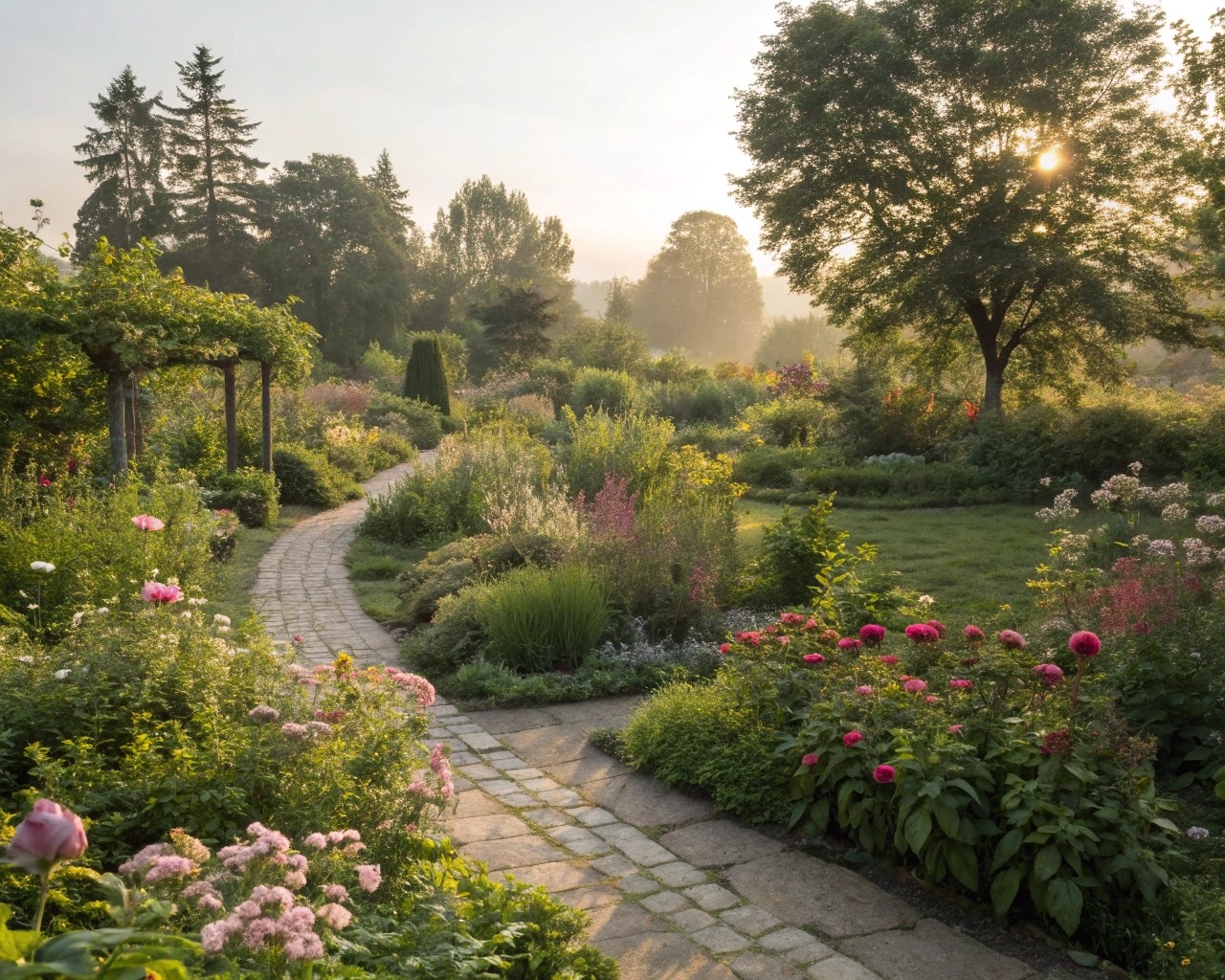
I recommend spending a full day observing your space at different times, noting when and where light reaches various areas. The intensity matters too—morning sun is gentler than harsh afternoon exposure. Pay attention to:
- Soil drainage patterns (shade areas often hold moisture longer)
- Root competition from nearby trees
- Seasonal light changes as sun angles shift
- Microclimates created by structures or terrain
Design Principles for Shade Gardens
The Power of Layered Planting
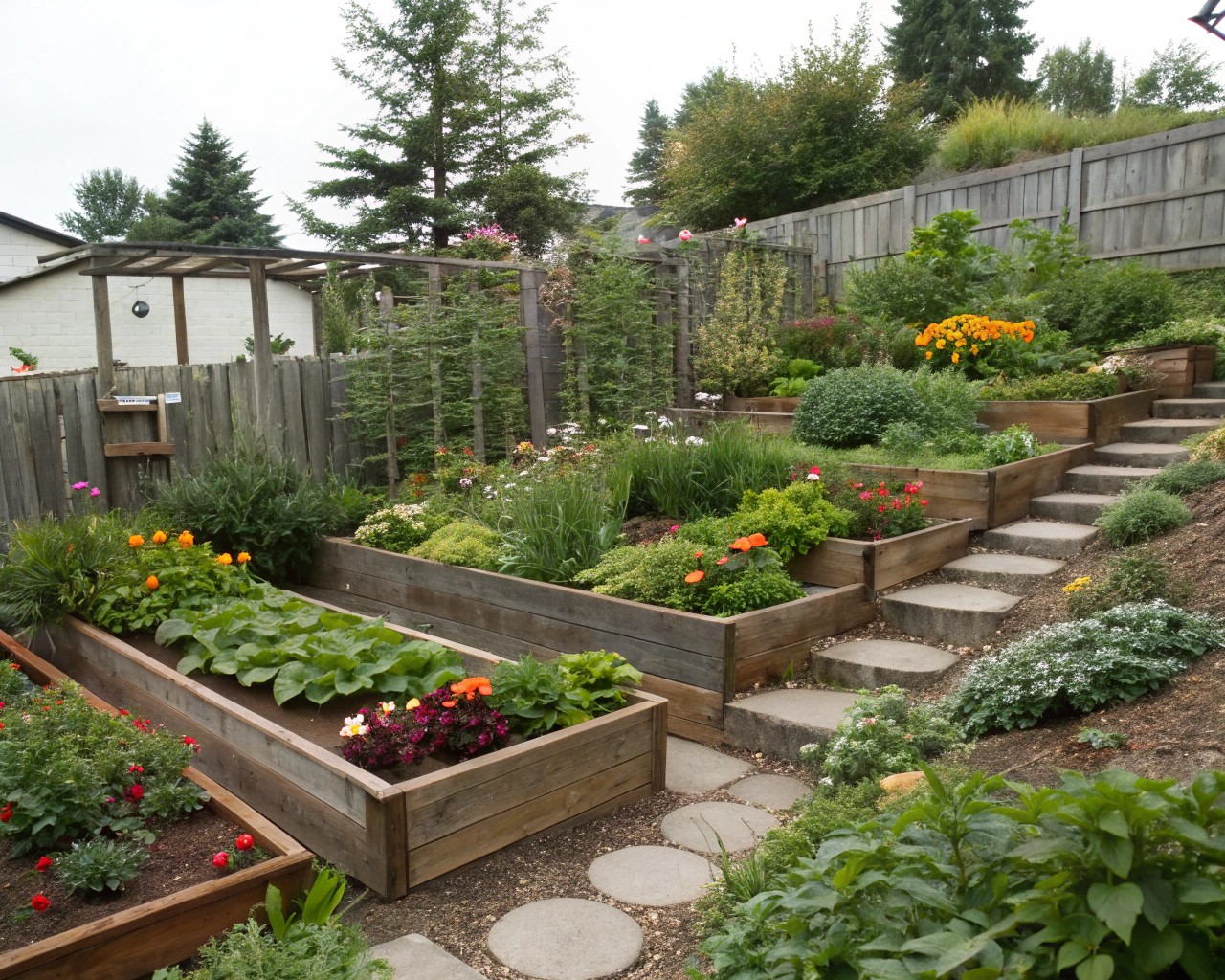
Nature provides our best template through woodland ecosystems. A successful shade garden mimics this natural layering system:
Canopy Layer
– Existing or newly planted trees providing overhead structure
– Consider understory trees like Japanese maples or serviceberry
Understory Layer
– Medium-height shrubs (4-8 feet)
– Excellent choices include abelia, which tolerates moderate shade especially in warmer climates
Herbaceous Layer
– Perennials and ornamental grasses (1-4 feet)
– Astilbe, with its feathery summer plumes, serves as an ideal backbone plant
Ground Layer
– Low-growing plants and groundcovers
– Incorporate spreading plants like ajuga or sweet woodruff
Creating Visual Unity and Flow
Repetition for Cohesion
Use consistent elements throughout your space—this might be the silvery foliage of pulmonaria or the architectural form of hostas repeated in different sizes.
Texture Combinations
The absence of bright flowers makes texture relationships critical. Combine bold foliage (large hosta leaves) with fine textures (delicate fern fronds or astilbe foliage).
Strategic Focal Points
In lower light conditions, every element needs to work harder. A striking specimen plant, decorative container, or small water feature can anchor different garden areas.
Plant Selection for Shade Success
Foundational Shade Perennials
| Plant | Light Requirements | Height/Spread | Key Features | USDA Zones |
|---|---|---|---|---|
| Astilbe | Partial shade to full shade | 1-4 feet tall/wide | Feathery summer plumes, deer resistant | 3-8 |
| Hosta | Full to partial shade | 6-48″ tall, 10-60″ wide | Dramatic foliage, month-long blooms | 3-9 |
| Hellebore | Partial to full shade | 1-3 feet tall/wide | Early spring blooms, evergreen foliage | 3-9 |
| Heuchera (Coral Bells) | Partial shade | Variable | Colorful foliage year-round | 4-9 |
| Japanese Painted Fern | Light to moderate shade | Up to 2-3 feet | Silvery, lacy foliage | 3-8 |
Reliable Shade-Tolerant Shrubs

Abelia proves invaluable for its versatility, offering glossy foliage and tubular flowers from spring through fall. Varieties like ‘Kaleidoscope’ provide excellent moderate shade tolerance.
Begonias work exceptionally well as seasonal color providers, thriving in containers or garden beds with minimal water requirements compared to impatiens.
Plants for Deep Shade Challenges
When working with truly challenging deep shade areas, I’ve found success with these particularly tolerant varieties:
- Sweet box (Sarcococca) – Actually requires shade and provides winter interest
- Epimedium – Excellent groundcover with spring flowers
- Brunnera – Heart-shaped leaves with spring forget-me-not flowers
Creating Color in Low-Light Spaces
Foliage-Based Color Schemes
Rather than relying solely on flowers, embrace foliage as your primary color source:
Serene Purple Palette
– Japanese painted fern (silvery-purple fronds)
– Persian shield (rich purple leaves)
– Heuchera ‘Shanghai’ (coral bells with purple foliage)
– Purple Dragon lamium (purple-marked leaves)
Golden Glow Effect
– All Gold Japanese forest grass
– Golden autumn fern (bronze-gold fall color)
– ‘Paul’s Glory’ hosta (yellow-centered leaves)
– Lady’s mantle (chartreuse flowers and foliage)
Working with White and Light Colors
Light colors become luminous in shade settings. Strategic placement of white-flowered plants like white astilbe, white begonias, or variegated hostas can create striking focal points that seem to glow in low light.
Hardscaping and Structural Elements
Pathways and Navigation
Well-designed paths become especially important in shade gardens where sightlines may be limited. Consider:
- Natural stone for organic appeal
- Gravel paths that complement woodland aesthetics
- Stepping stones through planted areas
- Wooden boardwalks for wet or heavily rooted areas
Water Features for Ambiance

A small fountain or water feature adds both sound and movement, creating a focal point that doesn’t rely on bright sunlight for impact. The sound of moving water also helps mask urban noise while attracting wildlife.
Seating and Contemplation Areas
Shade gardens naturally invite quieter activities. I often include:
- Simple wooden benches positioned to overlook key planted areas
- Stone seating integrated into retaining walls
- Small clearings with comfortable outdoor furniture for reading or relaxation
Seasonal Interest and Succession Planting
Spring Emphasis Strategy
Many shade gardens peak in spring before tree leaves fully emerge. Plan for:
- Early bulbs like snowdrops and crocuses
- Spring ephemerals such as trillium and bloodroot
- Hellebores blooming from late winter into spring
- Pulmonaria providing early season color
Summer and Fall Continuity
Maintain interest through warmer months with:
- Astilbe for mid-summer color
- Late-season perennials like Japanese anemone
- Foliage plants that provide consistent structure
- Fall-interest plants like autumn fern with seasonal color changes
Practical Implementation Examples
Small Urban Courtyard (10′ x 12′)
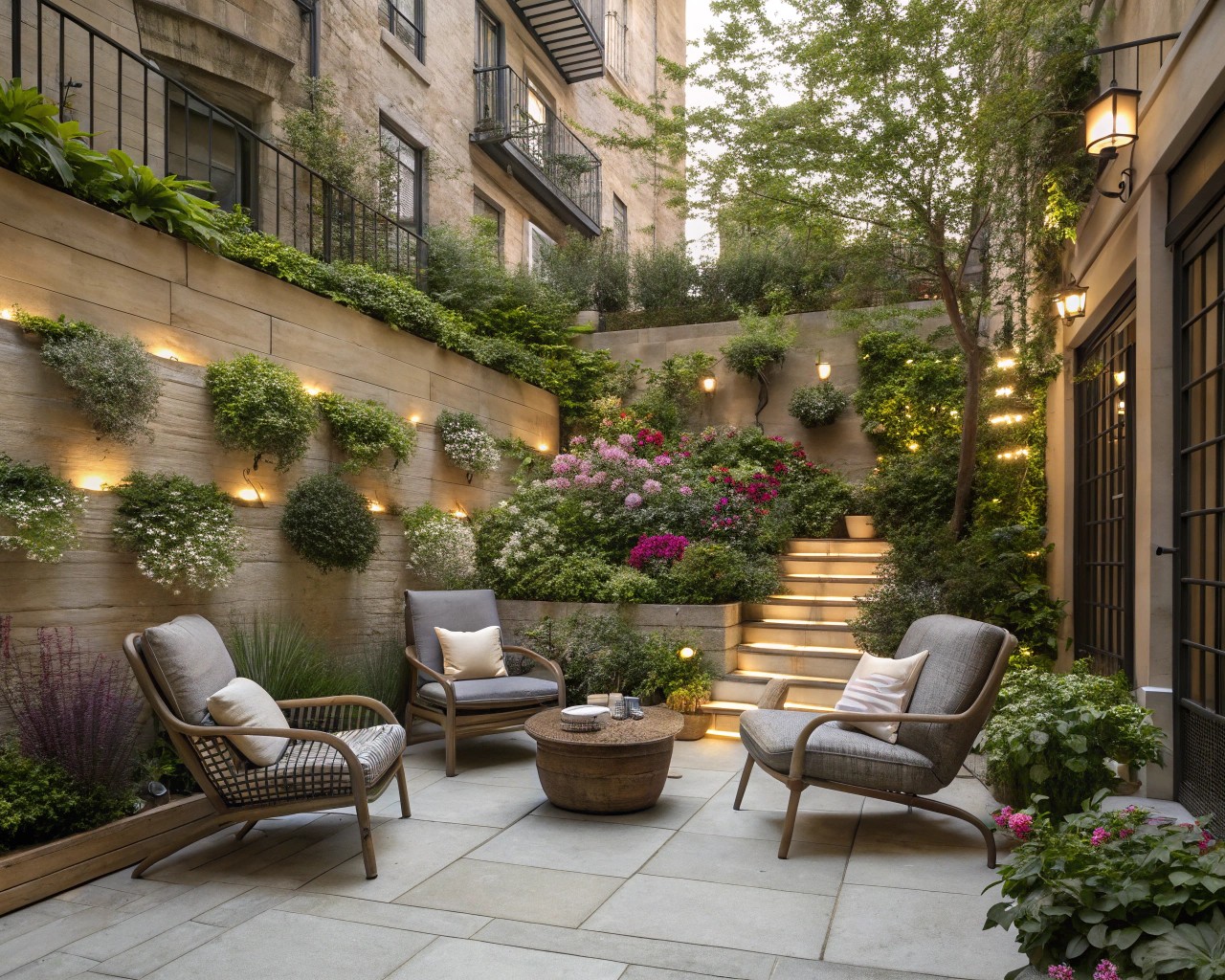
Design Strategy: Create intimate layered seating area
Plant Selection:
- 3 Hostas of varying sizes for structure
- 5 Astilbe for seasonal color
- 7 Heuchera for year-round foliage interest
- Japanese painted fern as accent groundcover
Hardscaping: Small bistro table with two chairs, container plantings for flexibility
Woodland Edge Border (30′ x 6′)
Design Strategy: Naturalistic drift plantings
Plant Arrangement:
- Background: Existing trees plus 2-3 understory shrubs
- Middle layer: Large sweeps of astilbe (15-20 plants)
- Front border: Alternating drifts of hosta and fern
- Accent plants: Hellebores placed at 8-foot intervals
Maintenance Access: 2-foot maintenance path along back edge
Foundation Planting Transformation
Challenge: North-facing house foundation in full shade
Solution Strategy:
- Structural plants: 3 abelia shrubs for year-round presence
- Seasonal color: Mass plantings of begonias in containers
- Textural interest: Japanese forest grass in repeated groupings
- Ground coverage: Ajuga to suppress weeds and unify planting
Understanding Soil and Drainage Considerations
Shade areas often present unique soil challenges. Heavy clay may stay wet longer, while areas under large trees may be quite dry due to root competition. Address these through:
- Soil testing to understand pH and drainage characteristics
- Organic matter addition to improve both drainage and water retention
- Mulching strategies to conserve moisture and suppress weeds
- Irrigation planning for areas with high root competition
Maintenance and Long-Term Success
Sustainable Care Practices
Shade gardens typically require less intensive maintenance than sunny borders, but they have specific needs:
Pruning and Cleanup
– Remove spent flower stalks to maintain appearance
– Divide perennials every 3-4 years to maintain vigor
– Clear fallen leaves promptly to prevent disease issues
Fertilization Approach
– Use balanced, slow-release fertilizers sparingly
– Focus on organic matter incorporation rather than heavy feeding
– Monitor for signs of nutrient deficiency in heavily rooted areas
Seasonal Tasks
– Spring cleanup and division timing
– Summer watering management during dry periods
– Fall preparation for winter protection where needed
The transformation of challenging shaded spaces into dynamic, beautiful gardens requires patience and understanding of the unique opportunities these areas provide. By working with nature’s shade-adapted plants and design principles, you create gardens that offer respite, beauty, and ecological value that sunny spaces simply cannot match. These carefully planned shade gardens often become the most treasured and frequently used areas of the entire landscape.

